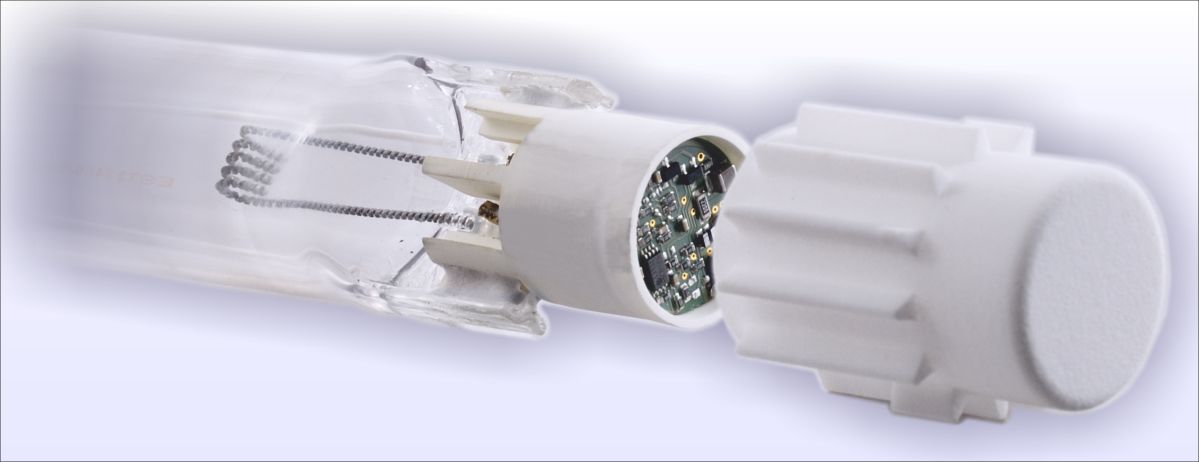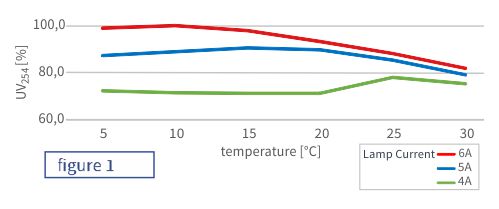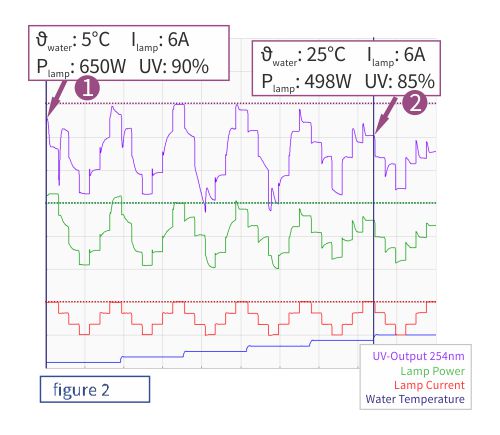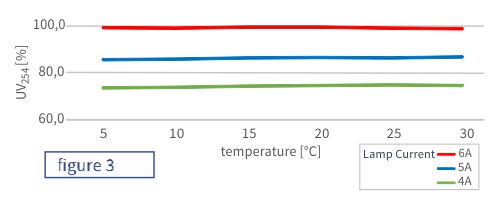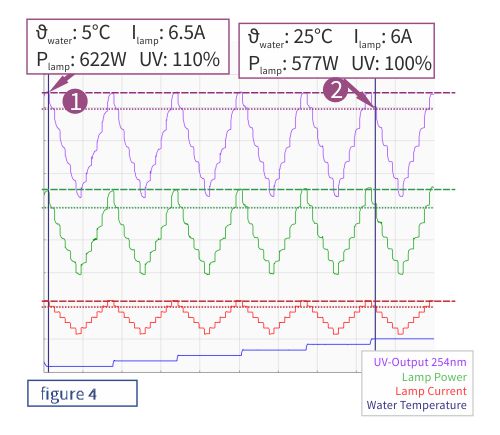PPT - Perfect Performance Tool
Die UV-Leistung von Niederdruck-Amalgam-Lampen ist stark temperaturabhängig - schon kleine Schwankungen oder Dimmvorgänge können die UV-Leistung deutlich reduzieren. Dies beeinträchtigt nicht nur die Effizienz, sondern auch die Betriebssicherheit in anspruchsvollen Anwendungen.
Die PPT-Lampen von ZED bieten eine zuverlässige Alternative. Ihre innovative Technologie liefert eine stabile und vorhersagbare UV-Leistung, unabhängig von der Umgebungstemperatur oder dem Dimmwert. Außerdem bieten sie einen höheren Spitzenleistung, was die UV-Leistung optimiert und die Effizienz erhöht.
- Optimierte Amalgam-Lampen für Wasseraufbereitungsanwendungen
- Konstante UV-Leistung in einem weiten Bereich von Wassertemperaturen bei voller Leistung
- Vorhersagbare UV-Leistung bei allen Dimmstufen auch bei sehr niedrigen und sehr hohen WassertemperaturenO
- Standard-Lampenabmessungen - bestehende UV-Systeme können für eine bessere Leistung aufgerüstet werden
- ‘Out of arc’ Amalgamlampen 250 - 1000 W (= T9, T10 oder T12) können als Basis für PPT-Lampenkonstruktionen verwendet werden
- Ready to use - T10 and T12 ‘out of the box’ PPT lamp-ballast sets are available containing PPT lamp, suitable quartz sleeve and specific electronic ballast
- Beste Energieeffizienz
= beste Kosteneffizienz
= beste CO2-Bilanz
Verringerung der Leistungsreserve der UV-Anlage durch vorhersehbare UV-Leistung bei normalem Durchfluss und Spitzendurchfluss bei unterschiedlichen Wassertemperaturen
- Keine zusätzlichen Leitungen für den PPT-Betrieb erforderlich (lediglich vier Lampenleitungen)
PPT-Set = Amalgamlampe + ZED EVG + Hüllrohr
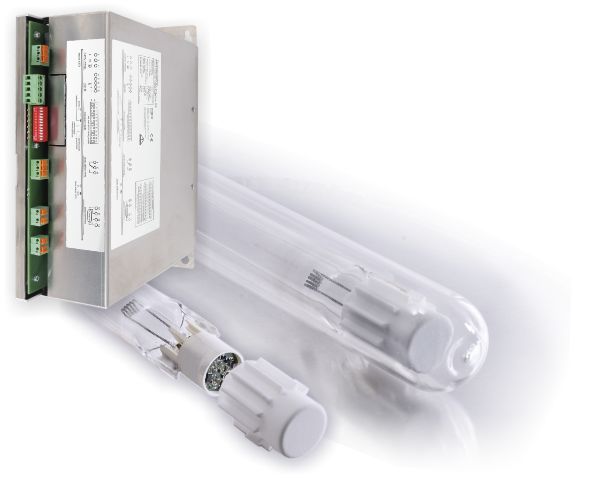
Vergleich
originale LampeAbbildung 1 zeigt die durchschnittliche UV-Leistung bei verschiedenen Wassertemperaturen einer typischen Amalgamlampe. |
PPT LampeDie entsprechenden Eigenschaften der PPT-Lampe sind in Abbildung 3 und 4 dargestellt. Die UV-Leistung ist unabhängig von der Wassertemperatur und der elektrischen Leistung gleichmäßig stabil. |
|
|
|
|
Das aktuelle zeitliche UV-Profil dieser Lampe bei verschiedenen Wassertemperaturen ist in Abbildung 2 dargestellt. Die Punkte (1) und (2) geben einen ausgewählten UV-Wert bei identischen Lampenstromwerten für verschiedene Wassertemperaturen an. Eine Temperaturerhöhung von 10°C auf 25°C führt bei dieser Lampe zu einer UV-Abnahme von 15%. |
Abbildung 4 zeigt zusätzlich den Lampenbetrieb mit erhöhtem Lampenstrom. Die UV-Leistung bleibt stabil. Das bedeutet, dass bei Verwendung der PPT eine Steigerung der UV-Leistung um 20 % im Vergleich zur ursprünglichen Lampe möglich ist. So kann in großen Anlagen die Anzahl der UV-Lampen reduziert werden. Abbildung 4 zeigt zusätzlich den Lampenbetrieb mit erhöhtem Lampenstrom. Die UV-Leistung bleibt stabil. Das bedeutet, dass bei Verwendung des PPT eine Steigerung der UV-Leistung um 20 % im Vergleich zur ursprünglichen Lampe möglich ist. So konnte die Anzahl der UV-Lampen in großen Anlagen reduziert werden. |
Zusammenfassung
PPT-Lampen erzeugen sehr vorhersehbare und stabile UV-Ausgangswerte für alle Dimmstufen in einem breiten Bereich von Umgebungstemperaturen. Außerdem kann aufgrund der hohen Stabilität eine höhere Spitzenleistung erreicht werden, was zu einem höheren UV-Output führt. Neben der stabilen und vorhersagbaren UV-Leistung kann die Verwendung von PPT-Lampen auch Energie und Hardware einsparen.
 Deutsch
Deutsch  English
English 
